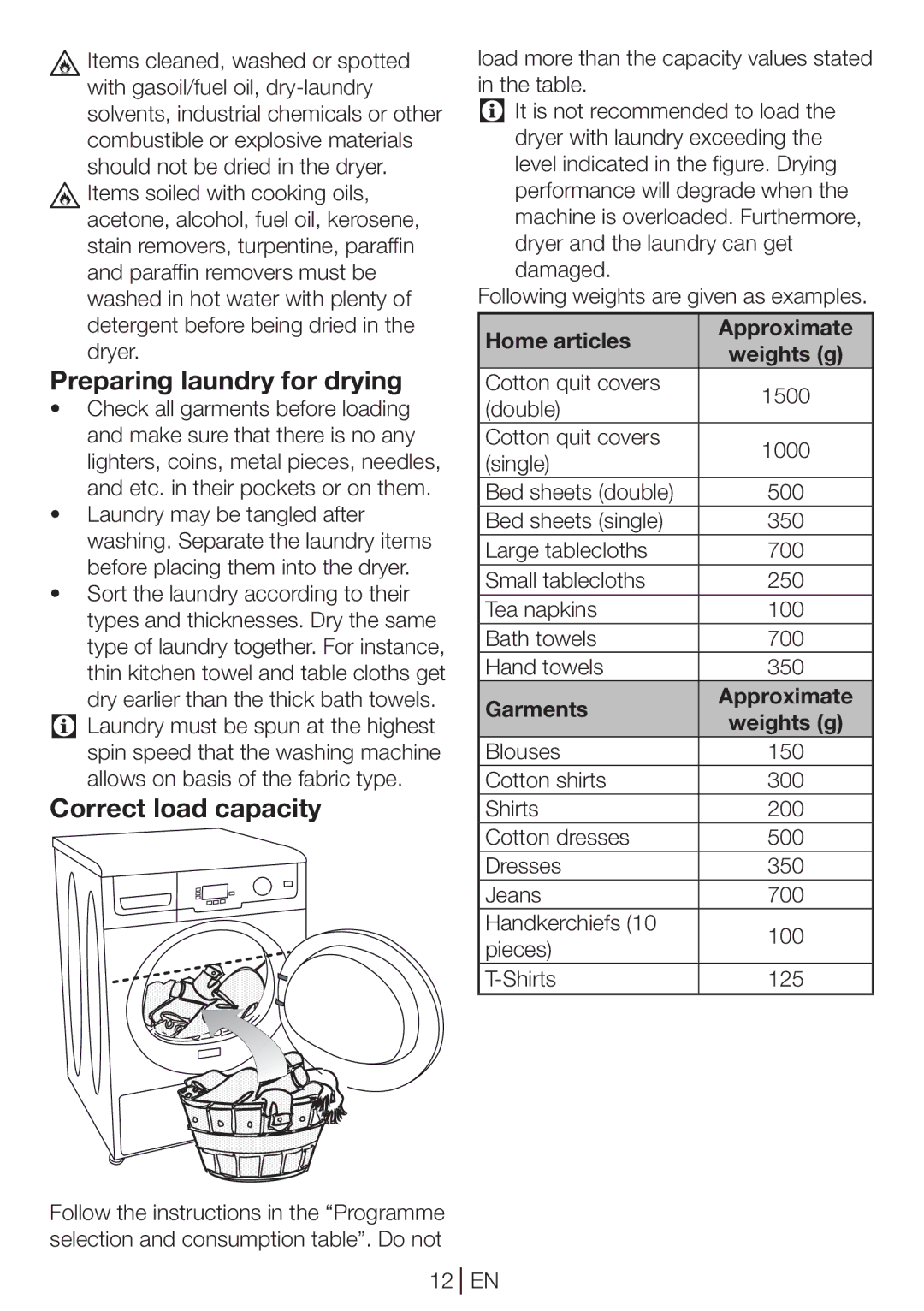
Items cleaned, washed or spotted with gasoil/fuel oil,
Preparing laundry for drying
•Check all garments before loading and make sure that there is no any lighters, coins, metal pieces, needles, and etc. in their pockets or on them.
•Laundry may be tangled after washing. Separate the laundry items before placing them into the dryer.
•Sort the laundry according to their
types and thicknesses. Dry the same type of laundry together. For instance, thin kitchen towel and table cloths get dry earlier than the thick bath towels.
C Laundry must be spun at the highest spin speed that the washing machine allows on basis of the fabric type.
Correct load capacity
Follow the instructions in the “Programme selection and consumption table”. Do not
load more than the capacity values stated in the table.
C It is not recommended to load the dryer with laundry exceeding the level indicated in the figure. Drying performance will degrade when the machine is overloaded. Furthermore, dryer and the laundry can get damaged.
Following weights are given as examples.
Home articles | Approximate | |
weights (g) | ||
| ||
Cotton quit covers | 1500 | |
(double) | ||
| ||
Cotton quit covers | 1000 | |
(single) | ||
| ||
Bed sheets (double) | 500 | |
Bed sheets (single) | 350 | |
Large tablecloths | 700 | |
Small tablecloths | 250 | |
Tea napkins | 100 | |
Bath towels | 700 | |
Hand towels | 350 | |
Garments | Approximate | |
weights (g) | ||
| ||
Blouses | 150 | |
Cotton shirts | 300 | |
Shirts | 200 | |
Cotton dresses | 500 | |
Dresses | 350 | |
Jeans | 700 | |
Handkerchiefs (10 | 100 | |
pieces) | ||
| ||
125 |
12
EN
